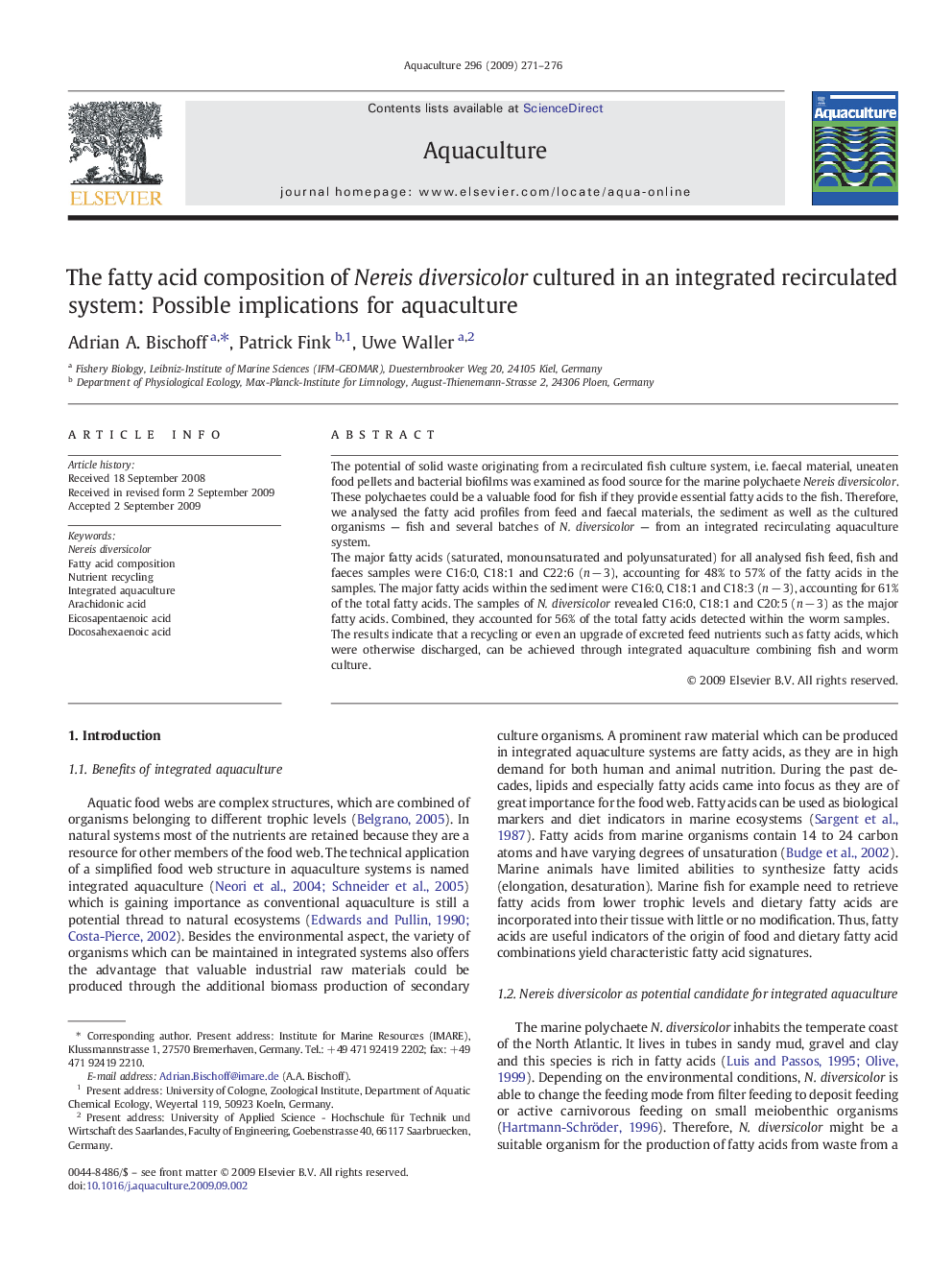| Article ID | Journal | Published Year | Pages | File Type |
|---|---|---|---|---|
| 2423857 | Aquaculture | 2009 | 6 Pages |
The potential of solid waste originating from a recirculated fish culture system, i.e. faecal material, uneaten food pellets and bacterial biofilms was examined as food source for the marine polychaete Nereis diversicolor. These polychaetes could be a valuable food for fish if they provide essential fatty acids to the fish. Therefore, we analysed the fatty acid profiles from feed and faecal materials, the sediment as well as the cultured organisms — fish and several batches of N. diversicolor — from an integrated recirculating aquaculture system.The major fatty acids (saturated, monounsaturated and polyunsaturated) for all analysed fish feed, fish and faeces samples were C16:0, C18:1 and C22:6 (n − 3), accounting for 48% to 57% of the fatty acids in the samples. The major fatty acids within the sediment were C16:0, C18:1 and C18:3 (n − 3), accounting for 61% of the total fatty acids. The samples of N. diversicolor revealed C16:0, C18:1 and C20:5 (n − 3) as the major fatty acids. Combined, they accounted for 56% of the total fatty acids detected within the worm samples.The results indicate that a recycling or even an upgrade of excreted feed nutrients such as fatty acids, which were otherwise discharged, can be achieved through integrated aquaculture combining fish and worm culture.
